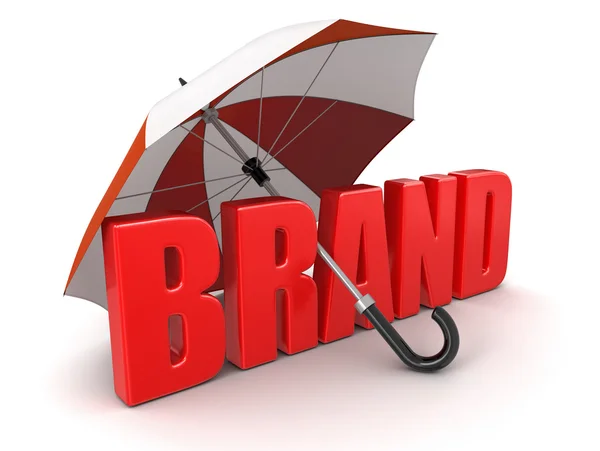As an entrepreneur, (Protect Your Brand) you know the value of protecting your brand. After all, your brand is what sets you apart from the competition and makes you unique. Defending your brand can be challenging, however.
It’s not uncommon for small businesses to unknowingly run afoul of copyright laws when using images or other creative assets in their marketing materials or products.
Unless you take steps to protect your brand, someone else may register it as their own or infringe on its usage rights — both situations that can be detrimental to your business. To help guard against this sort of mishap, here are seven ways to avoid copyright infringement as an entrepreneur:

Key Highlights for Protect Your Brand: How to protect your brand?
- Know your rights when it comes to brand usage.
- Read and understand the terms of any licence you agree to.
- Use licensed images only.
- Be aware of visual similarities in your marketing materials.
- Don’t use uncleared music or audiovisual content.
- Be wary of “free” graphics and fonts.
- Consult a lawyer if you’re still unsure.
- Create a trademark registration
- Include copyright notices and licenses
- Only use licensed photos and creative assets
- Make sure the licence is valid
- Be cautious of using stock photos in your marketing
- Don’t use other people’s brand logos or trademarks
- Conclusion
Today, more than ever before, brands are being copied. Companies such as Apple, Nike, and Adidas have proven that once a good idea is put into practice by many people, it can be turned into a successful product.
However, this rise in brand replication doesn’t only affect small startups. Even the most well-established companies can fall victim to brand infringement if they aren’t careful. Fortunately, there are plenty of ways you can protect your brand from copyright infringement without investing too much money or time in the process. Read on for more information…
Create a Copyrightable Brand Logo
Most brands are built on a logo. This logo is the primary visual representation of your brand and is the first thing customers see when shopping for your products or services. logo consists of the name of your brand, type of word mark, and any font color or style.
You can also choose to include the year your company was founded. If you want to ensure that your brand is protected from copyright infringement, it is important to create a logo that is both copyrighted and has strong trademark protection.
To ensure copyright protection, your logo must be original. For it to be considered original, it should be completely different from all other logos around. To ensure trademark protection, your logo should contain specific keywords, such as your company name, or the names of your products or services.
Register a Trademark for your Brand
There are many advantages to registering your brand as a trademark. First and foremost, registering your brand will help protect its trademark status in the future. If you were to trademark your logo but were unsure of its trademark status, you wouldn’t be able to protect your logo against copyright infringement.
Second, registering your brand will help alert anyone who is using your logo in a way that violates your trademark rights. When someone is using your logo without your permission, you can send them a cease and desist letter to stop using your logo.
Finally, registering your brand will help the Indian Patent and Trademark Office determine the priority of your trademark.
The IP India will determine both the first and last marks that fall under each trademark application. Third-Party companies may have the ability to register a trademark for your company name, logo, or products. To ensure that no one else is using your registered trademark, you may have to file an opposition to have another company’s trademark cancelled.
Build a Distinctive Product or Service
While it may seem like an unnecessary step to trademark a logo or product, companies that choose to build a distinctive product or service may find that trademark protection is necessary.
Think about the last product you purchased. How was it different from the products you purchased in the past? If you were to use this product in the future as a customer, you may want to consider trademarking it.
You could trademark a distinctive product by trademarking a symbol, logo, or words that identify your products. This way, other companies would need permission from you to use your trademark in order to stop any possible copyright infringement.
Protect Trademarks in Your Domain Name
If your brand is being copied, you can try to stop the infringement by trying to reclaim your brand’s trademark in your domain name. First, you’ll need to find out what the person or company with the infringing domain is using your brand’s name for. Next, you’ll need to find the registrar of the infringing domain (usually the domain registrar is listed on the domain name).
Then, you’ll need to file a complaint with ICANN, which is the body that oversees domain name registrars. To file this complaint, you’ll need to get the contact information for a manager or legal representative at the registrar.
Once you have the contact information, you’ll need to send them a letter explaining the situation and asking them to remove the infringing domain name.
Be Vetting New Products Before They Launch
New products are often seen as a great way to boost sales and expand your brand. However, there are many ways that new products can be mistaken for another company’s trademarked products or services. For example, a company could launch a new wearable product that looks and functions just like a popular fitness tracker.
Or, a company could launch a new type of food that looks just like a popular brand. New products can be a great way to expand your brand, but they can also be a great way to infringe upon someone else’s trademark.
Conclusion
Brand protection can be a costly and time-consuming process, but it’s important to do so. Copyrights protect your intellectual property, and a trademark protects your brand identity. Don’t let anyone use your logo or product without permission.
These two steps can help protect your business against brand infringement. Register your trademarks with the USPTO and use the same logo across all platforms.




